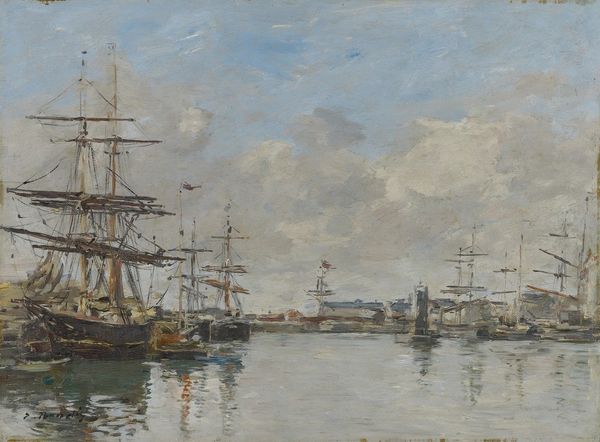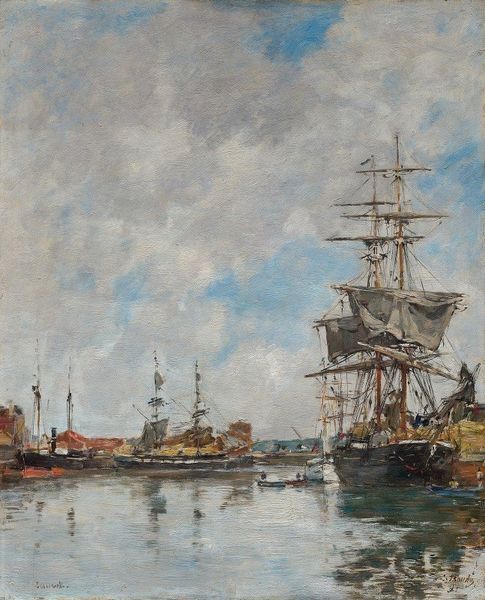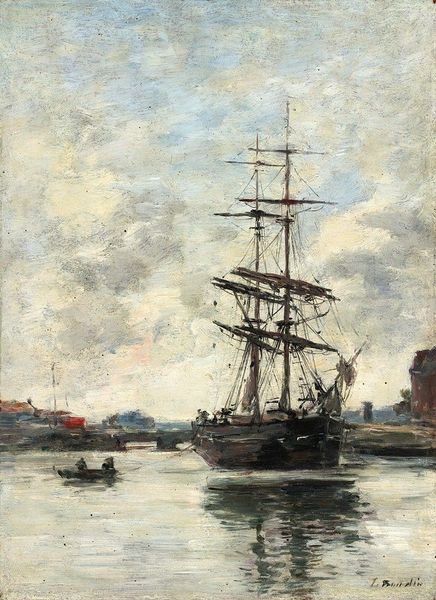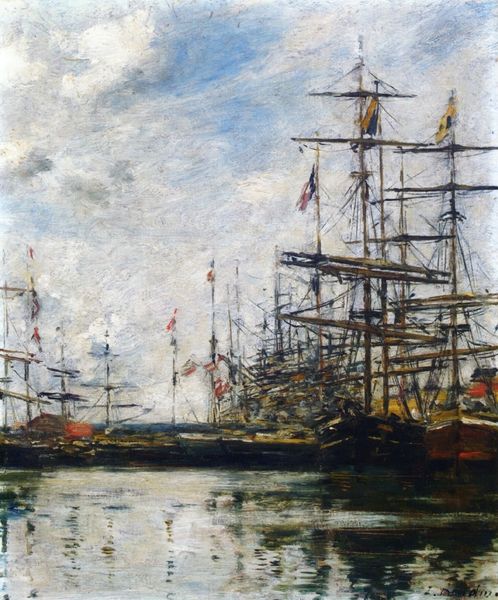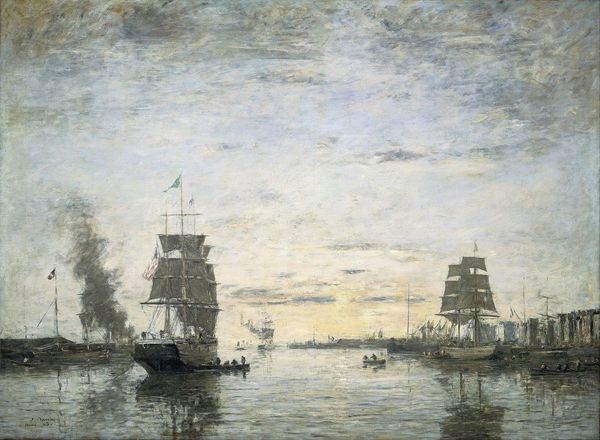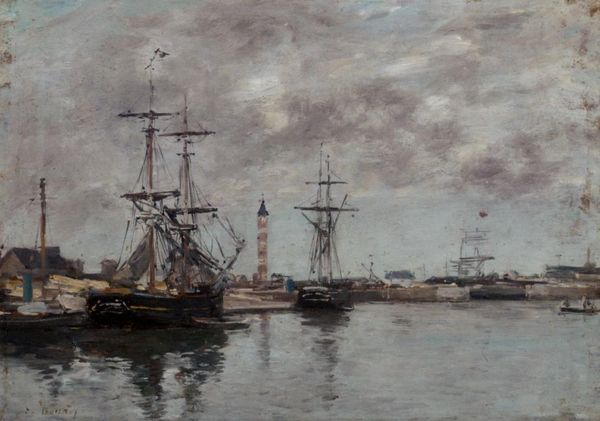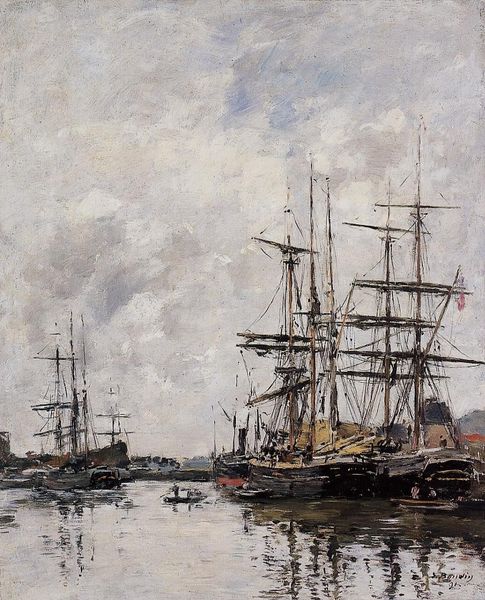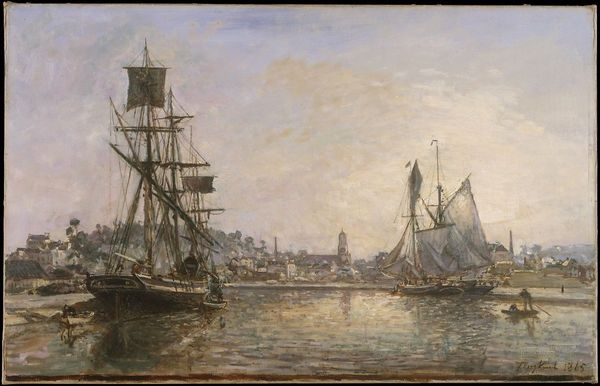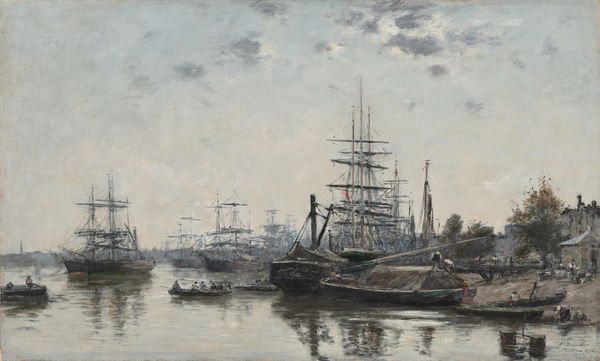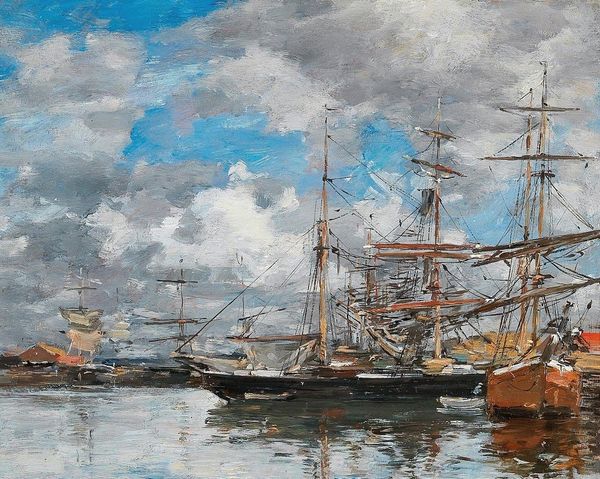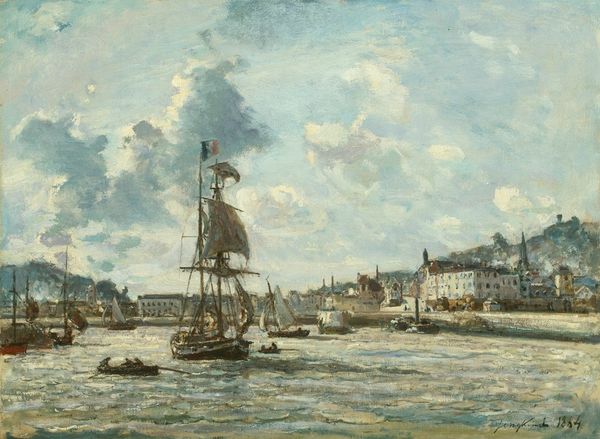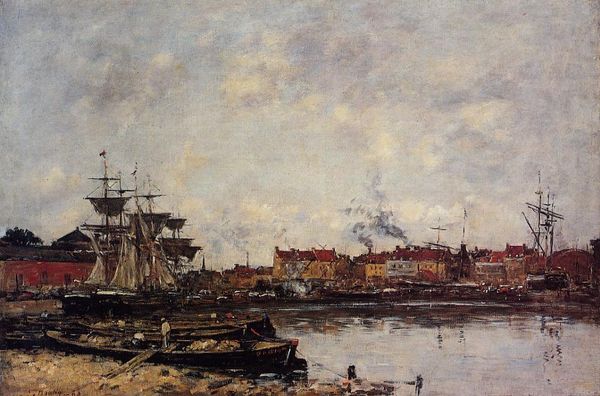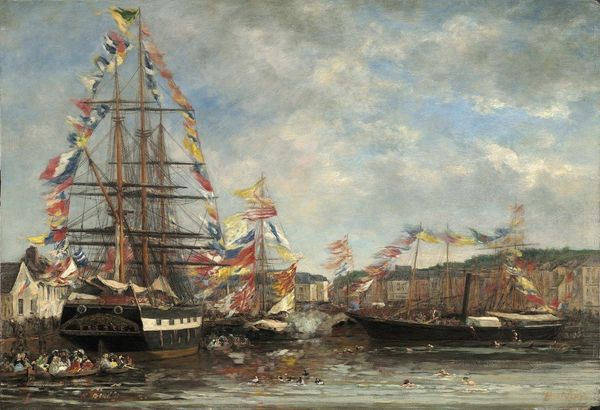
Copyright: Public Domain: Artvee
Editor: So this is Eugène Boudin's "Le Havre. Bassin De La Barre," painted in 1892. It’s an oil painting, and to me, it has this melancholic, almost foggy feeling. The ships seem imposing but also trapped within the harbor. What’s your take on it? Curator: Boudin captures more than just a port; he reflects the changing social and economic tides of the late 19th century. How do you think industrialization and colonialism, foundational to that century, manifest in this scene? Editor: Well, the ships obviously speak to trade and the harbor would be crucial for colonial expansion. It makes me wonder about who exactly is benefiting from all this maritime activity, and who might be excluded. Curator: Exactly! Consider also the labor connected to maritime industries and harbor cities, how these factors connect to class distinctions and opportunity. The impressionistic style can offer a key for analysis here, too. Editor: The soft brushstrokes, right? How everything kind of blends together? It almost obscures the individual workers, the people actually doing the labor. Is Boudin commenting on the de-individuation of labor that resulted from industrialization? Curator: It's plausible! And how does the light play a role in potentially obscuring or highlighting elements in the painting? Who has visibility? What socio-economic hierarchies might the work imply? Editor: I see what you mean! This is far more than just ships in a harbor, it's a moment loaded with political and economic significance, skillfully composed to trigger feelings related to this moment. Curator: Precisely. Art serves as a critical lens. Looking closely at Boudin's work helps us investigate the historical power structures of the late 1800s. Editor: Thanks so much for highlighting these considerations. Now when I look at this painting, I can view it as part of a broader cultural conversation around labor and class.
Comments
No comments
Be the first to comment and join the conversation on the ultimate creative platform.
